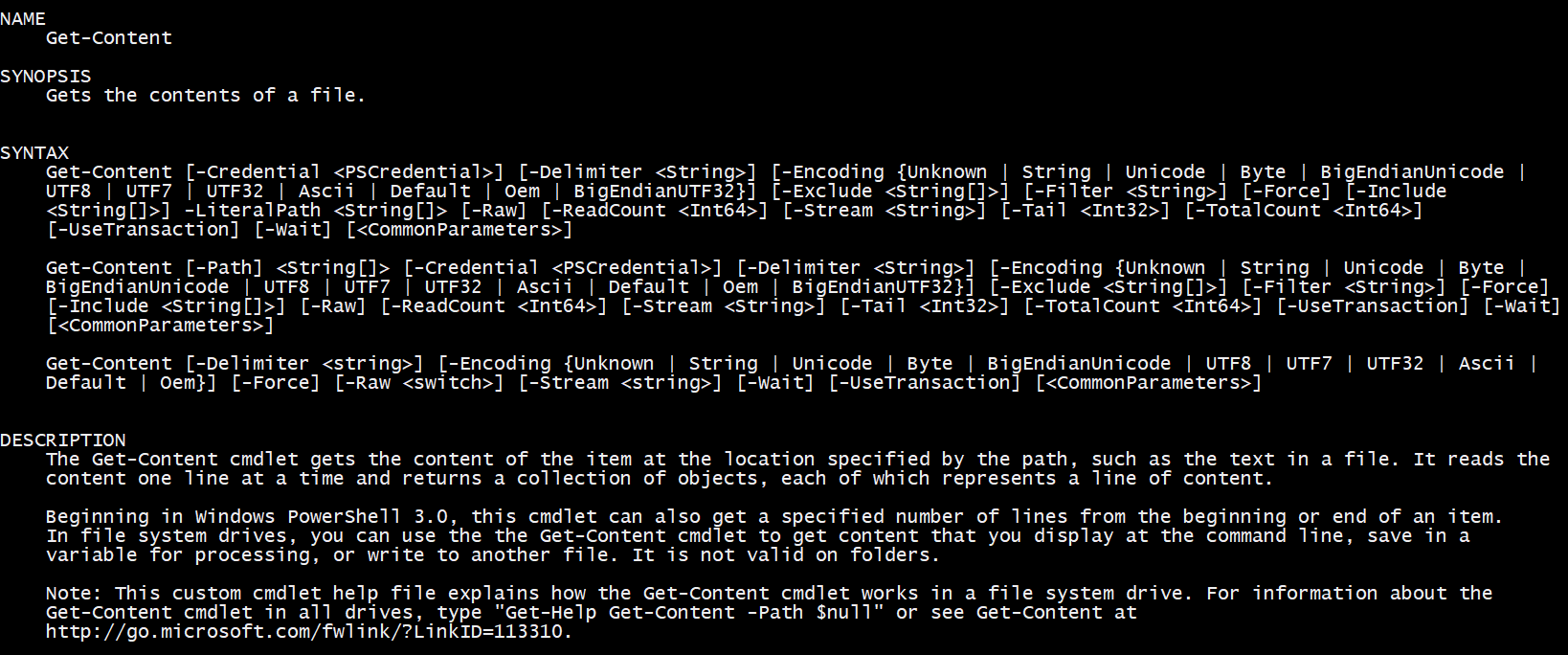There are no cmdlets more familiar to newcomers and experts alike than the PowerShell Help Command, Get-Help. Due to PowerShell’s integrated and updatable help system, the PowerShell Get-Help command is the way you discover what commands do, their parameters, and even (hopefully) lots of useful examples of how to use the command.
Every cmdlet and function you come across is supposed to have help content built with it that the PowerShell Get-Help cmdlet can read. I say “supposed to” because unfortunately, some authors don’t include help content.
Help content associated with commands can be found by running Get-Help. This command reads both comment-based and XML-based help that is built by the cmdlet or function author.
The most common use of the Get-Help cmdlet is to use it to find help content for a particular command. For example, perhaps you’ve discovered a new command called Get-Contentwith the Get-Command cmdlet and want to know more information about it. You’d use the Name parameter on Get-Help. This would return a basic set of information about that command as you can see below.

You’ll notice that although a lot of information is returned, it’s just a summary of things you can do. And you’d never know that Get-Help can return other types of help content too like examples.
Finding Parameter Information
You can drill down into the help content more a few different ways. One of those ways is finding information on a single parameter of a command. Perhaps in the example, I’m using here, I see a reference to a Raw parameter and am not quite sure what that parameter does. I can use the Parameter parameter on Get-Help with the Name parameter to return only information about that particular command parameter.

PowerShell Get-Help and Examples
One of the best things about the PowerShell help system is that it has native support for examples. Examples are an excellent way to see, with context, how to use a particular command. If the command author added examples to their help content, you can see those examples by using the Examples parameter. When you use this parameter, Get-Help will return one or more examples of how that command is used in different circumstances.

Getting Verbose Help
Summaries, parameter information, and examples aren’t the only information returned by the PowerShell Get-Help command. Sometimes, you need to see all information available for a cmdlet. In that case, you always have the Detailed and Full parameters available. Each of these parameters displays an increasing amount of information.
The Detailed parameter adds parameter descriptions and examples to the primary help display. In essence, they combine using the Examples parameter and will display information for all of the parameters as if you would have used the Parameter parameter on all of the command parameters.
If the Detailed parameter isn’t enough; you can always go the nuclear approach and return all of the help content with the Full parameter. This parameter doesn’t filter information at all. The Fullparameter reads all of the help content defined for a particular command.
Getting Graphical
If you’d like a more graphical representation of the help, you can also use the ShowWindow parameter. This parameter brings up a window that allows you to easily search the help content and only show certain areas via the Settings button. This view is helpful if you really want to go help content sleuthing.

Summary
There are a few other, less common parameters you can use with the PowerShell Get-Help command. If you’re interested in learning more, you know how to find information on those additional parameters, right? Yup, Get-Help can find help content on itself.
Use the Get-Help command religiously when looking for more information about PowerShell commands. There’s little need to go to Google when you have a powerful help system and a command to help you tap into it.




